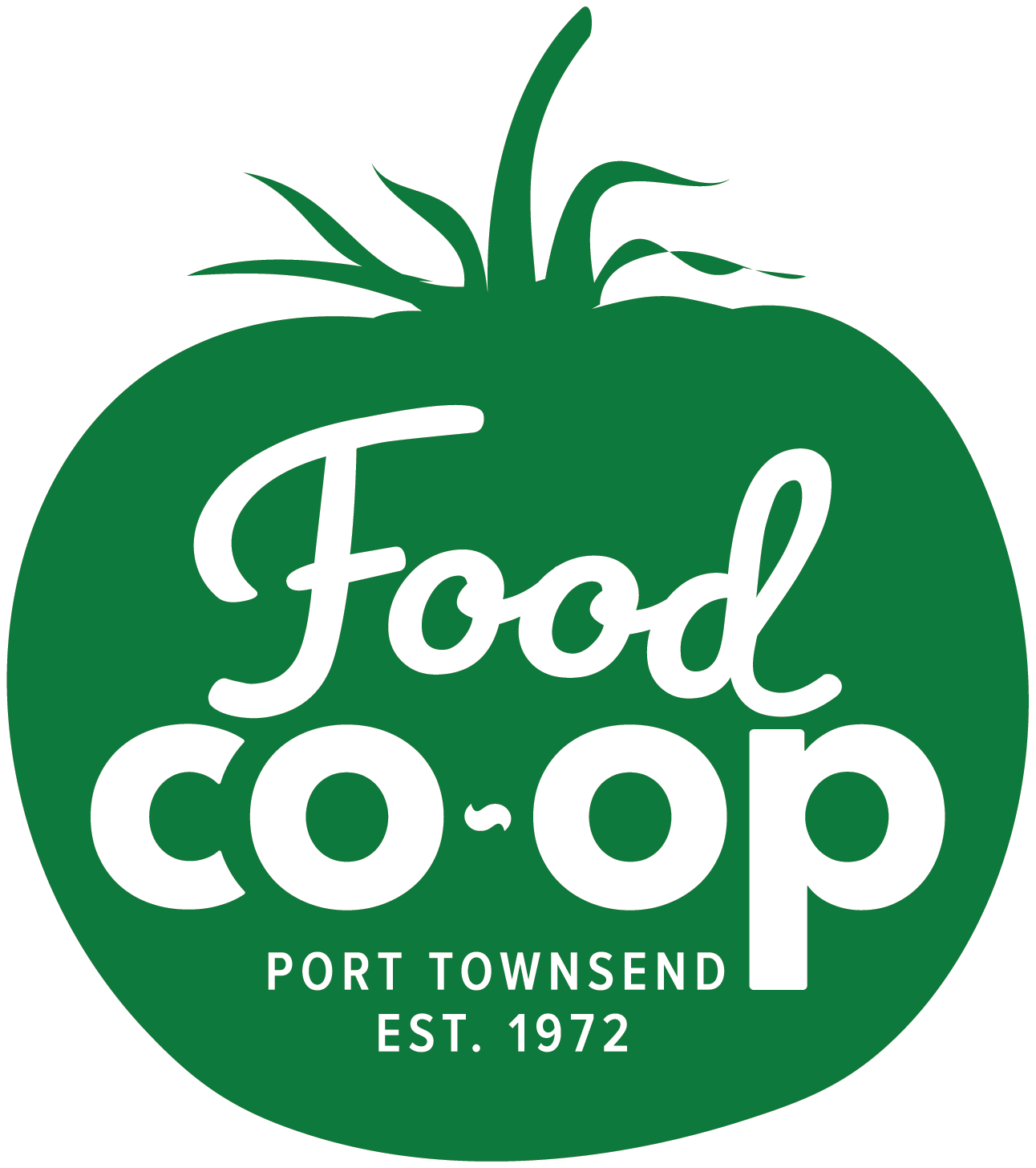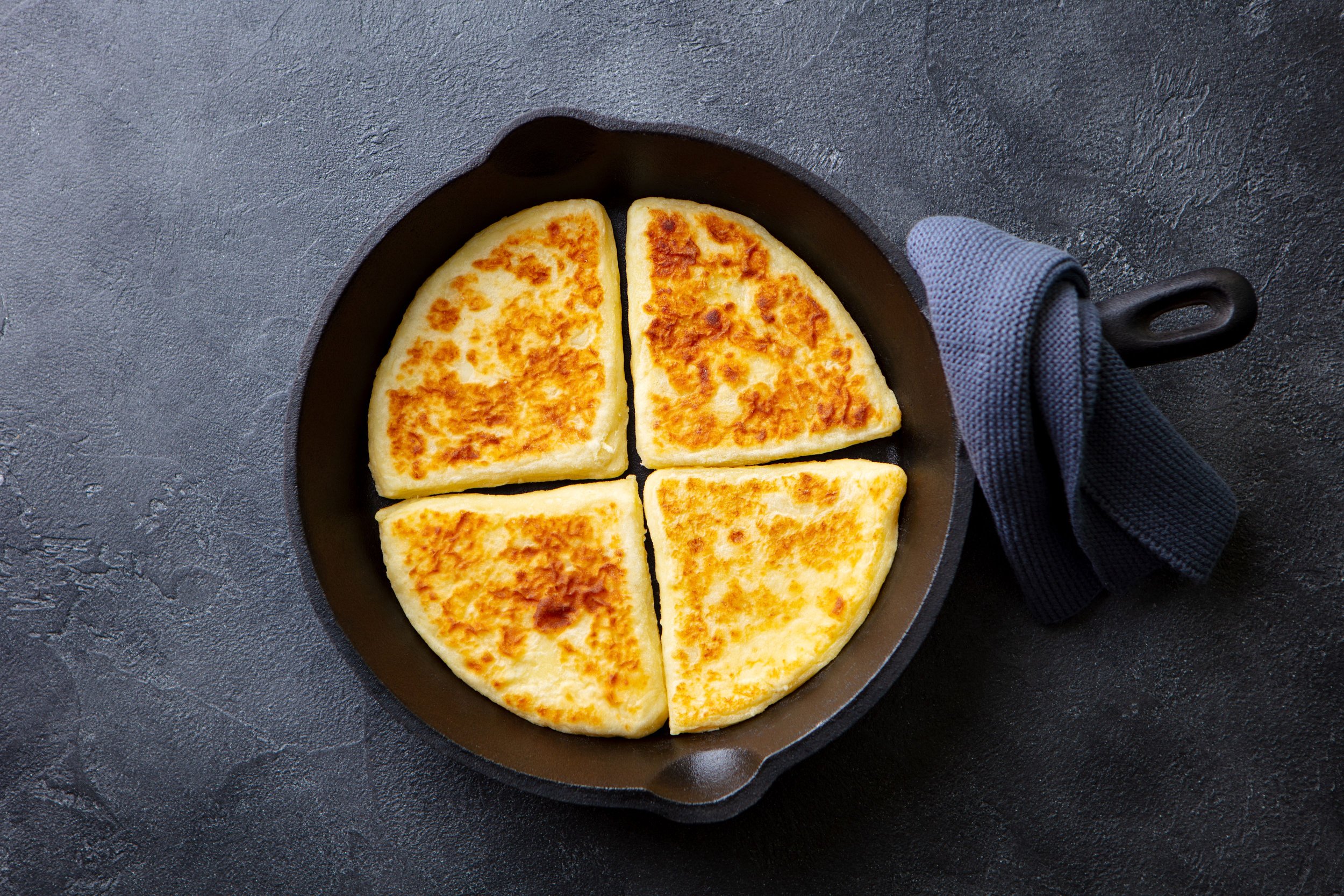The Magic of Soda Breads
by Sidonie Maroon , The Food Co-op Culinary Educator, abluedotkitchen.com
Follow Sidonie on The Food Co-op’s Facebook group Cooking with the Co-op
Find more recipes at www.foodcoop.coop/blog/soda-breads
The reaction between baking soda and buttermilk is one of those practical magics that’s easily overlooked, but if you dig deeper, it’s filled with history, science, and a touch of culinary romance.
Irish and American Soda Bread Connections
The history of Irish soda bread, often made for Saint Patrick’s Day, crisscrosses the old and new worlds. Using soda ash to leaven bread is first credited to Native Americans. They used Pearl ash combined with a sour liquid before 1800 to make flat cakes on hot stones, but the marketing of bicarbonate of soda, or Saleratus, began in the 1840s when Americans John Dwight and Dr. Austin Church produced it from their kitchen. They were a success and by 1896, Church and Dwight’s descendants had formed The Arm and Hammer Co.
American Soda Breads
In the 1860s, they began publishing popular mini cookbooks with soda bread recipes. Soda breads, also called quick breads, batter breads, and tea breads, depend on chemical leavening, as opposed to yeast. Bi-carbonate of soda is alkaline and when combined with an acid like buttermilk or vinegar, makes carbon dioxide bubbles. The bubbles trapped in the batter cause it to rise. The oven’s heat speeds up the acid-base reaction, until it reaches its maximum capacity for lift.
Americans have a rich home baking tradition, with many standbys and favorites — muffins, quick breads, pancakes, cakes… that all start with soda bread chemistry. The innovation for these beloved recipes, of course, is baking powder, which, in its simplest form, is nothing more than alkaline baking soda, combined with acidic cream of tartar, a winemaking byproduct. Single acting baking powder reacts as soon as it is hydrated, while double acting releases another burst of gas in the oven.
Irish Soda Breads
The first reference to Irish Soda bread is in 1836, from an Irish newspaper in County Down. Soda breads work especially well with soft wheat flours, what we call pastry or cake flour, because they have less protein, so make a delicate crumb. The US primarily grew soft wheats in the 19th and early 20th centuries, and Ireland imported much of its wheat from the US. Soda bread was cheap and easy to put on the table. Sour milk was often a byproduct at dairies, and unlike yeast breads, soda breads were baked without an oven, using a griddle or Dutch oven instead.
Traditional Irish Soda bread has only a few key ingredients: flour, salt, baking soda and a soured milk; anything else moves it into the tea bread category. The problem is without fat, it’s soon rock hard, and as plain a loaf as you’ll ever taste, humble and true. There is a wider scope of Irish soda breads with more merit. Barmbrack, a spiced and fruity tea loaf, is my favorite.
Try baking with locally grown and milled flours like Finnriver’s Early Sunrise Pastry Flour or Elwha River Spelt Flour. For a gluten and grain free alternative, try my Speckled Buckwheat Soda Bread, on the Food Coop’s Blog — The Beet.
Trivia Question: Do you know where baking soda comes from?
These days, it’s mined in Wyoming. Trona, a sodium carbonate compound, is processed into baking soda, and Wyoming has the world’s largest deposit, supplying much of our nation’s soda ash and globally marketed.
Speckled Chimacum Soda Bread
Finnriver Farm and Grainery grows and mills a local pastry flour perfectly suited to soda bread. Early Sunrise is a heritage variety brought to Washington in the late 1890s by Russian Mennonite immigrants. It’s a light and creamy Soft Red Winter Wheat.
Ingredients
3 cups Early Sunrise Pastry Flour
1 teaspoon baking soda
1 teaspoon sea salt
1 ¼ cups whole milk
2 tablespoons apple cider vinegar
4 tablespoons melted butter
2 tablespoons runny honey
4 squares (100g) dark chocolate of choice, chopped
Directions
1. Preheat the oven to 425 F. Line a baking sheet with parchment paper.
2. In an oven-proof dish, melt the butter in the preheating oven.
3. Sift the flour, soda and salt together in a mixing bowl. Mix in the chocolate.
4. Make a well in the flour and pour in the combined milk, vinegar, melted butter and honey.
5. Lightly mix into a soft shaggy dough. Do not knead, but form into a round on the parchment about 1 ½ inches thick. Score into quarters and bake for 20 to 25 minutes and golden brown. The internal temperature should be above 190 F.
6. Serve with butter.
Speckled Buckwheat Soda Bread
Makes 1 large loaf cut into 8 slices
A light open loaf speckled with dark chocolate, and your friends will never guess what it’s made from!
Ingredients
Dry (once the dry ingredients are ground, we refer to them as flour)
⅔ cup raw buckwheat groats
½ cup raw chickpeas
¼ cup tapioca starch
¼ cup potato starch, not flour
¼ cup golden flax seeds
2 tablespoons psyllium seed husk powder
1 teaspoon sea salt
1 teaspoon baking soda
1 teaspoon anise seed
1 teaspoon fennel seed
Wet
1 ¼ cups whole milk
¼ cup apple cider vinegar
4 tablespoons melted butter
2 tablespoons runny honey
Other
4 squares (100g) dark chocolate of choice, chopped
Directions
1. Preheat the oven to 425 f. Line a baking sheet with parchment paper. In an oven-proof dish, melt the butter in the preheating oven.
2. Using a high-speed blender, like a Vitamix, or a grain or coffee grinder — grind the dry ingredients together on the highest speed for 1 minute. Sift into a mixing bowl. Regrind the fines that won’t go through the strainer and add to the flour. Stir the chocolate pieces into the flour.
3. Mix the milk and apple cider vinegar together, and add the melted butter.
4. Briefly mix the flour and wet ingredients together. The dough will puff up with the acid and alkaline reaction. Allow it to sit and soak up moisture for a couple of minutes. With a rubber spatula, scrap the soft dough into the middle of the parchment lined baking sheet, and gently pat it, with oiled hands, into a round that’s 2-inches thick. You’ll want to keep as much of the puffy volume in the dough as possible. With a wet bread knife, score the loaf into eight rectangles.
5. Bake for 20 minutes or until golden brown. Cool for 15 minutes before eating.
6. This bread makes amazing toast in the air fryer — Preheat for 4 minutes and then 390F for 4 minutes. Refrigerate uneaten bread and eat it within a few days.
Alternative: Leave out the chocolate and instead add 1 teaspoon caraway seed, 1 teaspoon anise seed, 1 teaspoon fennel seed and 1 teaspoon coriander seeds. This loaf would also work well with added currents or raisins.
Lady Cornelia Bread
A Quimper Barmbrack from the Salish Sea
Makes 1 small loaf with 12 wedges
Dry Ingredients
1 cup raw quinoa, use a brand that’s pre rinsed, or rinse and dry overnight before grinding
1 cup buckwheat groats, untoasted kasha
¼ cup flax meal
3 tablespoons psyllium seed husk powder
1 teaspoon fine sea salt
1 teaspoon baking soda
1 teaspoon baking powder
2 teaspoons sweet spice
½ cup raisins
½ cup walnuts
Wet
¼ cup unsalted butter, melted
¼ cup apple cider vinegar
1 cup water
Sweet Spice
You will have extra — store it in a jar for future use.
1 cinnamon stick (broken into shards)
¼ teaspoon whole cloves,
1 teaspoon grated nutmeg
1 teaspoon whole allspice
1 teaspoon anise seeds
1 teaspoon whole coriander
5 green cardamom pods
¼ teaspoon peppercorns
1 teaspoon dried ginger root powder
Directions
1. Preheat the oven to 450 F. Line a dutch oven or round lidded casserole with parchment paper and rub the parchment paper with oil.
2. Assemble the ingredients, grind the sweet spice mix if you don’t already have it on hand.
3. Using a high-speed blender, grind all the dry ingredients together into a flour. Dump the flour into a mixing bowl. Add the raisins and walnuts to the blender and grind into a rough meal and dump into the mixing bowl. Break the meal up into the flour.
4. Melt the butter and measure out the vinegar and water into a liquid measure. Add the melted butter to the other liquids and pour into the flour. Using a rubber spatula, scrape the edge of the bowl, turning the flour into the liquid. Keep doing this until it’s all mixed, and the batter has thickened to a dough.
5. Lift the dough and shape it into a round ball by bringing the top towards the bottom. Set the shaped loaf onto the parchment paper. With scissors, cut off the excess paper around the edges. Score a cross, about a ½ inch deep into the loaf with a knife.
6. Bake the loaf with the lid on for 30 minutes. Take the lid off and bake for another 15 minutes. Remove the loaf from the casserole or Dutch Oven by lifting on the parchment paper. Let it cool for 30 minutes before slicing. Serve with butter, jam and a pot of Irish tea.
Potato Scones
Makes a 7 inch round, cut into eight
Ingredients
Dry ingredients
1/3 cup pre-washed raw quinoa
1/3 cup raw chickpeas
2 tablespoons flaxseed
OR replace the above with 1 ⅓ cups all purpose flour
2 teaspoons baking powder
1/2 tsp sea salt
1/4 tsp baking soda
1/4 tsp ground black pepper
2 tablespoons onion flakes
Wet ingredients
1/4 cup bacon drippings from four slices of fatty bacon. Use olive oil to make up the ¼ cup if needed.
2 tablespoons apple cider vinegar
1/3 cup sour cream or yogurt
⅓ cup whole milk
1/2 cup mashed potatoes from a medium-sized peeled russet potato
Additions
Crumbled bacon from four slices about 1/4 cup
1 tbsp minced parsley
Directions
Preheat the oven to 425° f. Line a baking sheet with parchment paper.
1. Using a high-powered blender or Vitamix, grind all dry ingredients into a flour and sift into a mixing bowl.
2. Peel a medium russet potato cut into chunks and boil until soft.
3. With scissors, thinly slice 4 pieces of fatty bacon and fry over a medium heat until crisp. Remove the bacon and measure the lard, using 1/4 cup for the scones.
4. Whisk the wet ingredients together thoroughly, mashing the potato.
Combine the wet ingredients into the dry and add the bacon and parsley until a wet batter forms.
5. Gently pat the batter, with damp hands, into a 7-in circle and score with a knife into eight even pieces.
6. Bake for 15 minutes. Cool slightly before eating.
Note: for a vegetarian alternative, replace the bacon drippings with olive oil and leave out the bacon.





